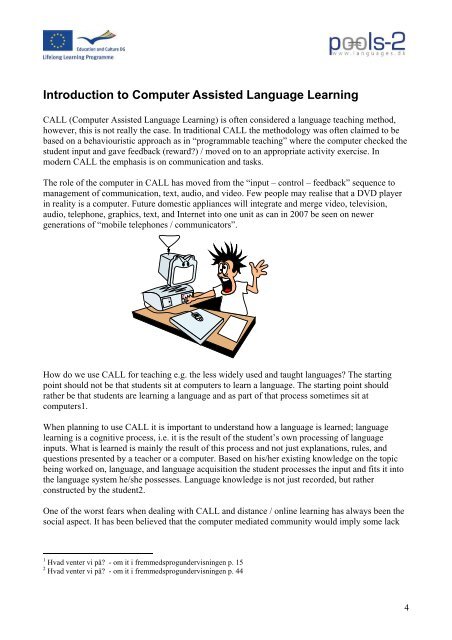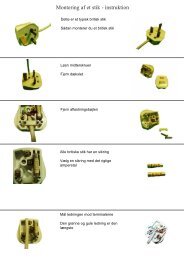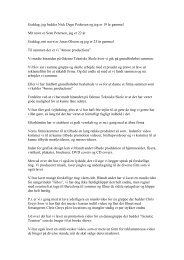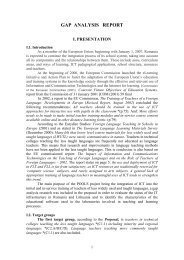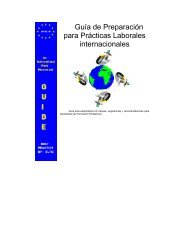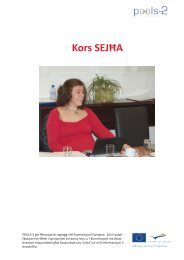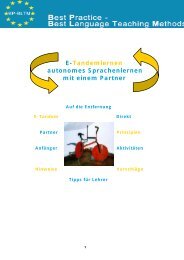introduction to computer assisted language learning 4 elearning
introduction to computer assisted language learning 4 elearning
introduction to computer assisted language learning 4 elearning
You also want an ePaper? Increase the reach of your titles
YUMPU automatically turns print PDFs into web optimized ePapers that Google loves.
Introduction <strong>to</strong> Computer Assisted Language Learning<br />
CALL (Computer Assisted Language Learning) is often considered a <strong>language</strong> teaching method,<br />
however, this is not really the case. In traditional CALL the methodology was often claimed <strong>to</strong> be<br />
based on a behaviouristic approach as in “programmable teaching” where the <strong>computer</strong> checked the<br />
student input and gave feedback (reward?) / moved on <strong>to</strong> an appropriate activity exercise. In<br />
modern CALL the emphasis is on communication and tasks.<br />
The role of the <strong>computer</strong> in CALL has moved from the “input – control – feedback” sequence <strong>to</strong><br />
management of communication, text, audio, and video. Few people may realise that a DVD player<br />
in reality is a <strong>computer</strong>. Future domestic appliances will integrate and merge video, television,<br />
audio, telephone, graphics, text, and Internet in<strong>to</strong> one unit as can in 2007 be seen on newer<br />
generations of “mobile telephones / communica<strong>to</strong>rs”.<br />
How do we use CALL for teaching e.g. the less widely used and taught <strong>language</strong>s? The starting<br />
point should not be that students sit at <strong>computer</strong>s <strong>to</strong> learn a <strong>language</strong>. The starting point should<br />
rather be that students are <strong>learning</strong> a <strong>language</strong> and as part of that process sometimes sit at<br />
<strong>computer</strong>s1.<br />
When planning <strong>to</strong> use CALL it is important <strong>to</strong> understand how a <strong>language</strong> is learned; <strong>language</strong><br />
<strong>learning</strong> is a cognitive process, i.e. it is the result of the student’s own processing of <strong>language</strong><br />
inputs. What is learned is mainly the result of this process and not just explanations, rules, and<br />
questions presented by a teacher or a <strong>computer</strong>. Based on his/her existing knowledge on the <strong>to</strong>pic<br />
being worked on, <strong>language</strong>, and <strong>language</strong> acquisition the student processes the input and fits it in<strong>to</strong><br />
the <strong>language</strong> system he/she possesses. Language knowledge is not just recorded, but rather<br />
constructed by the student2.<br />
One of the worst fears when dealing with CALL and distance / online <strong>learning</strong> has always been the<br />
social aspect. It has been believed that the <strong>computer</strong> mediated community would imply some lack<br />
1 Hvad venter vi på? - om it i fremmedsprogundervisningen p. 15<br />
2 Hvad venter vi på? - om it i fremmedsprogundervisningen p. 44<br />
4


